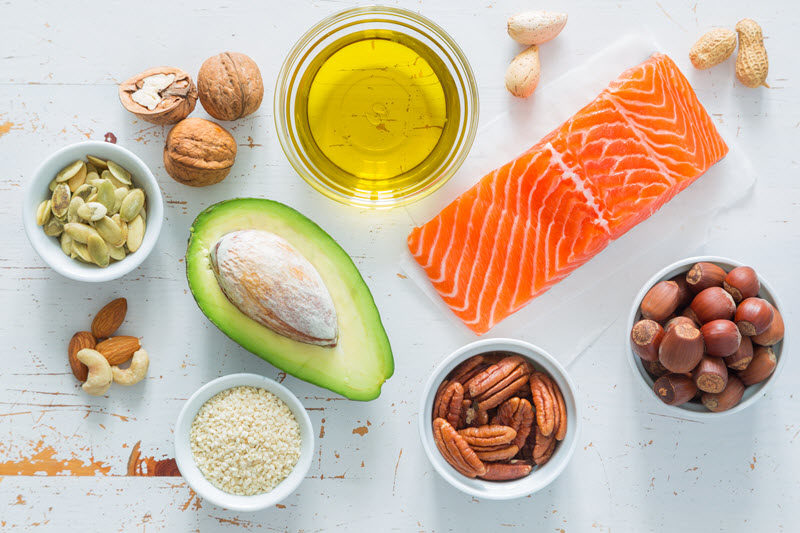
Misconception: Cholesterol isn’t a concern for children
High cholesterol can be inherited. This is referred to as familial hypercholesterolemia.
Children who have this genetic disorder are at very high risk of heart disease. This problem is underdiagnosed and undertreated worldwide. Once identified, children with this condition may require aggressive treatment with medications.
Cholesterol testing should be considered for children and adolescents with elevated risk. That includes children with:
- A parent or grandparent who had evidence of coronary atherosclerosis, peripheral vascular disease or cerebrovascular disease.
- A parent or grandparent who had a coronary artery procedure.
- A parent or grandparent who had a heart attack or sudden cardiac death before age 55.
- A parent who has a history of high total cholesterol levels (240 mg/dL or higher).
Regardless of their risk, all children benefit from a healthy diet and lifestyle. Establishing the habits of healthy eating and physical activity early on can reduce the risk of cardiovascular problems over time.
Compelling evidence shows that the atherosclerotic process (buildup of plaque in arteries) begins in childhood and progresses slowly into adulthood. Later in life, this often leads to coronary heart disease, the leading cause of death in the United States.
To reduce your child’s risk, it’s important to:
- discourage cigarette smoking
- encourage regular aerobic exercise
- identify and treat high blood pressure
- help your child maintain a healthy weight
- diagnose and treat diabetes
- encourage a healthy diet
Children two and older should be encouraged to eat a diet that emphasizes fruits, vegetables, fish, whole grains and low sodium, with few sugar-laden foods and drinks.
Misconception: You don’t need a cholesterol check until middle age
The American Heart Association recommends that all adults 20 and older have their cholesterol (and other risk factors) checked every four to six years. Work with your doctor to determine your risk for cardiovascular disease and stroke.
Misconception: Thin people don’t have high cholesterol
Overweight people are more likely to have high cholesterol, but thin people can be affected as well. A person with any body type can have high cholesterol.
People who don’t easily gain weight are often less aware of how much saturated and trans fat they eat. Nobody can “eat anything they want” and stay heart-healthy.
Have your cholesterol checked regularly regardless of your weight, physical activity and diet.
Misconception: Only men need to worry about cholesterol
Both men and women tend to see higher triglyceride and cholesterol levels as they get older. Weight gain also contributes to higher levels.
But it is true that premenopausal women may have some protection from high LDL (bad) levels of cholesterol, compared to men. That’s because the female hormone estrogen is highest during the childbearing years and it tends to raise HDL (good) cholesterol levels. This may help explain why premenopausal women are usually protected from developing heart disease.
On the other hand, postmenopausal women may find that, despite a heart-healthy diet and regular physical activity, their cholesterol still rises. For this reason, women nearing menopause should have their cholesterol levels checked and talk with their doctor about their risk factors and treatment options.
At one time, it was thought that hormone replacement therapy might lower a woman’s risk of heart disease and stroke. But recent studies have shown that HRT does not reduce the risk of heart disease and stroke in postmenopausal women. The American Heart Association does not endorse HRT as a means for lowering cardiovascular risks.
Misconception: You should wait for your doctor to mention cholesterol
Your health is your responsibility.
Starting at age 20, ask your doctor to test your cholesterol, assess your risk factors and estimate your risk for a heart attack or stroke.
Once you know your risk, you can take action to lower it. Your doctor may recommend diet and lifestyle changes – and possibly medication as well. Follow all of your doctor’s instructions and have your cholesterol and other risk factors rechecked every four to six years.
Misconception: Diet and physical activity dictate your cholesterol level
Diet and physical activity do affect overall blood cholesterol levels, but other factors inform your levels as well.
Being overweight or obese tends to increase bad cholesterol (LDL) and lower good cholesterol (HDL). Getting older also causes LDL cholesterol to rise. For some, heredity may even play a role.
That said, a heart-healthy diet and regular physical activity are important to everyone for maintaining cardiovascular health.
Misconception: With medications, no lifestyle changes are needed
Medications can help control cholesterol levels, but making diet and lifestyle changes is the best way to reduce heart disease and stroke risk. To lower your cholesterol, eat a heart-healthy diet and get 40 minutes of moderate- to vigorous-intensity aerobic exercise, three to four times a week.
It’s also very important to take your medication exactly as your doctor has instructed.
Misconception: If the Nutrition Facts label shows no cholesterol, a food is “heart-healthy”
A food’s Nutrition Facts label can be helpful for choosing heart-healthy foods, if you know what to look for.
Many foods marketed as “low-cholesterol” have high levels of saturated or trans fats, both of which raise blood cholesterol. Even foods billed as “low-fat” may have a surprisingly high fat content.
Look for how much saturated fat, trans fat and total calories are in a serving. (Even check the serving size itself, which may be smaller than you expect.) Ingredients are listed in descending order of use, so choose products where fats and oils appear near the end of the ingredients list.
Misconception: Using margarine instead of butter will help lower cholesterol
It’s true: Butter has a high amount of saturated fat and some trans fat. That raises LDL (bad) cholesterol and contributes to atherosclerosis. But many hard margarines have a high amount of trans fat as well as saturated fat. That’s still bad.
The healthiest choice is a liquid margarine, or a soft margarine in a tub. These are made with vegetable oils. They have less partially hydrogenated fat and saturated fat than solid spreads like hard stick margarine and butter. Look for margarines that say 0 g trans fat on the Nutrition Facts label.
Switching from butter to soft margarine is a good step. But it’s one that, by itself, probably won’t reduce your cholesterol to healthy levels.
Know your Fats to Manage Cholesterol
What you eat can affect your LDL (bad) cholesterol. Knowing which fats raise LDL cholesterol and which ones don’t can help you lower your risk of heart disease and stroke.
Your body naturally produces all the LDL cholesterol you need. Eating foods containing saturated and trans fats causes your body to produce even more LDL, raising the level of “bad” cholesterol in your blood.
It’s worth understanding the different kinds of fats: Saturated, trans and unsaturated.
Saturated fat
Saturated fats are fat molecules that are “saturated” with hydrogen molecules. They are typically solids at room temperature.
Saturated fats occur naturally in many foods – primarily meat and dairy products. Beef, lamb, pork on poultry (with the skin on) contain saturated fats, as do butter, cream and cheese made from whole or 2 percent milk. Plant-based foods that contain saturated fats include coconut, coconut oil and cocoa butter, as well as palm oil and palm kernel oil (often called tropical oils).
For people who need to lower their cholesterol, the American Heart Association recommends reducing saturated fat to no more than 5 to 6 percent of total daily calories.For someone eating 2,000 calories a day, that’s about 11 to 13 grams of saturated fat.
Trans Fat
Trans fats (or trans fatty acids) are created in an industrial process that adds hydrogen to liquid vegetable oils to make them more solid. Another name for trans fats is “partially hydrogenated oils.”
Trans fats raise your bad (LDL) cholesterol levels and lower your good (HDL) cholesterol levels. These changes are associated with a higher risk of heart disease.
Trans fats are found in many fried foods. Baked goods, such as pastries, pizza dough, pie crust, cookies and crackers also can also contain trans fats.
Since 2006, the FDA has required trans fat content to be listed on the Nutrition Facts panel of packaged foods. In recent years, many major national fast-food chains and casual-dining restaurant chains have announced that they will no longer use trans fats to fry or deep-fry foods.
The American Heart Association recommends that adults who would benefit from lowering LDL cholesterol eliminate trans fat from their diet.
To find the amount of trans fats in a particular packaged food, look at the Nutrition Facts panel. Companies must list any measurable amount of trans fat (0.5 grams or more per serving) in a separate line in the “Total Fat” section of the panel, directly beneath the line for “Saturated Fat.” This means if a food package states 0 grams of trans fats, it might still have some trans fats if the amount per serving is less than 0.5 g. Make sure to check the ingredients list for “partially hydrogenated oil.”
Unsaturated fat
There are two kinds of unsaturated fats: monounsaturated and polyunsaturated. Monounsaturated fats have one (“mono”) unsaturated carbon bond in the molecule. Polyunsaturated fats have more than one (“poly,” for many) unsaturated carbon bonds. Both of these unsaturated fats are typically liquid at room temperature.
Eaten in moderation, both kinds of unsaturated fats may help to improve your blood cholesterol when used in place of saturated and trans fats.
Unsaturated fats are found in fish (such as salmon, trout and herring), and in plant-based foods such avocados, olives and walnuts. Liquid vegetable oils, such as soybean, corn, safflower, canola, olive and sunflower, also contain unsaturated fats.
Limiting saturated and trans fats
Here are some ways to lower your intake of saturated and trans fats:
- Maintain a diet that emphasizes fruits, vegetables, whole grains, low-fat dairy products, poultry, fish and nuts. Also limit red meat as well as sugary foods and beverages.
- Opt for naturally occurring unhydrogenated vegetable oils such as canola, safflower, sunflower or olive oil.
- Look for processed foods made with unhydrogenated oil rather than saturated fat or hydrogenated (or partially hydrogenated) vegetable oils.
- Use soft margarine as a substitute for butter and choose soft margarines (liquid or tub varieties) over harder stick forms. Look for “0 g trans fat” on the Nutrition Facts label.
- Doughnuts, cookies, crackers, muffins, pies and cakes are examples of foods high in trans fat. Don’t eat them often.
- Limit commercially fried foods and baked goods made with shortening or partially hydrogenated vegetable oils. These foods are very high in fat, and it’s likely to be trans fat.
- Limit fried fast food. Commercial shortening and deep-frying fats are still made by hydrogenation and contain saturated and trans fats.
Consider using a food diary to keep track of what you eat. It’s a handy way to evaluate the healthy, not-so-healthy and unhealthy foods you’re making a part of your everyday diet.
Courtesy: Heart.org





https://waterfallmagazine.com
Every weekend i used to visit this web site, because i wish for enjoyment, for
the reason that this this web page conations truly pleasant funny stuff too.